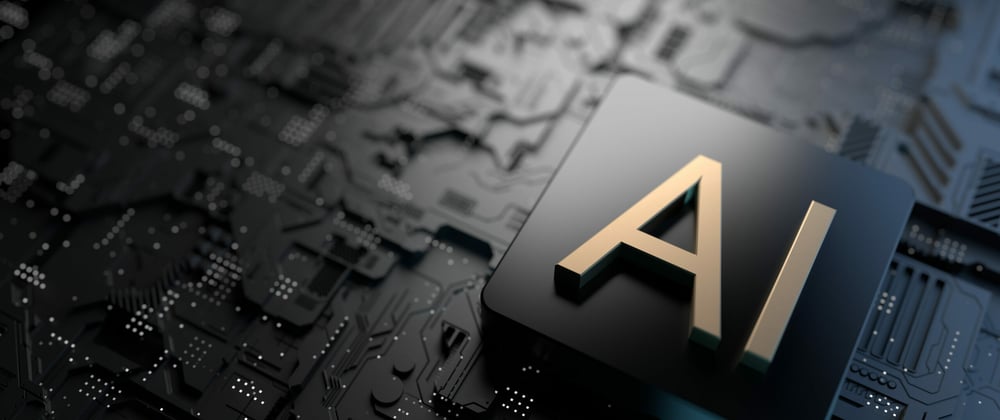So you want to learn about AI and Machine Learning? You've come to the right place! This is a beginner's guide to AI and Machine Learning. Let's get started right away!
What is AI?
AI stands for Artificial Intelligence. It is the intelligence of machines and computer programs. AI is a very broad field, and there are many different sub-fields. In this article, we will focus on Machine Learning, which is a sub-field of AI.
What is Machine Learning?
Machine Learning is a sub-field of AI that focuses on building programs that can learn from data. These programs are called Machine Learning models. A Machine Learning model is trained on a dataset, and then it can make predictions on new data.
What is a dataset?
A dataset is a collection of data. It is used to train Machine Learning models. There are many different kinds of datasets. In this article, we will focus on tabular datasets, which are datasets that are organized into rows and columns. Here is an example of a dataset
What is a Machine Learning model?
A machine learning model is an expression of an algorithm that combs through mountains of data to find patterns or make predictions. Fueled by data, machine learning (ML) models are the mathematical engines of artificial intelligence.
For example, an ML model for computer vision might be able to identify cars and pedestrians in a real-time video. One for natural language processing might translate words and sentences.
Under the hood, a machine learning model is a mathematical representation of objects and their relationships to each other. The objects can be anything from “likes” on a social networking post to molecules in a lab experiment.
What are some of the most popular Machine Learning models?
There are many different kinds of Machine Learning models. Here are some of the most popular ones:
- Decision Trees
- Random Forests
- Gradient Boosting Machines
- Support Vector Machines
- Neural Networks
How do Machine Learning models work?
Machine Learning models are trained on data. This data is usually organized into rows and columns. Each row is an example, and each column is a feature. Here is an example of a dataset:
| PassengerId | Survived | Pclass |
|---|---|---|
| 1 | 0 | 3 |
| 2 | 1 | 1 |
| 3 | 1 | 3 |
| 4 | 1 | 1 |
| 5 | 0 | 3 |
The first column is the PassengerId. This is a unique identifier for each passenger. The second column is the Survived column. This is the target variable. It tells us whether or not the passenger survived. The third column is the Pclass column. This is a feature. It tells us the class of the passenger's ticket.
The goal of a Machine Learning model is to learn the relationship between the features and the target variable. This is called training the model. Once the model has learned the relationship between the features and the target variable, it can make predictions on new data. This is called inference.
Types of Machine Learning
There are many different types of Machine Learning. Here are some of the most popular ones:
- Supervised Learning: Supervised learning is the most common type of Machine Learning. In supervised learning, the data you train your model on includes the target variable. This means that you tell the model what the correct answer is. The model then learns the relationship between the features and the target variable. Once the model has learned this relationship, it can make predictions on new data.
- Unsupervised Learning: Unsupervised learning is used when the data you train your model on does not include the target variable. This means that you do not tell the model what the correct answer is. Instead, the model must figure out the relationship between the features on its own. This is a very difficult task, and it is not very common. Most Machine Learning problems are supervised learning problems.
- Reinforcement Learning: Reinforcement learning is a type of Machine Learning where the model is trained using trial and error. The model makes a guess, and then it receives a reward or a penalty based on how good its guess was. This process is repeated many times. Eventually, the model learns the relationship between the features and the target variable.
Amazing Projects that uses AI & ML
Below is a list that I think are quite good in what they have achieved:
- Github Copilot - GitHub Copilot uses the OpenAI Codex to suggest code and entire functions in real-time, right from your editor.
- Dall.E 2 - DALL·E 2 is a new AI system that can create realistic images and art from a description in natural language.
- Nvidia Simulating Human Movements over 10 years!
- Every new midrange to flagship Phone now-a-days in the field of
adding 5 layers of virtual makeupPhotography, Face Unlock, and AR and heck even, game enemies! - TensorFlow - A framework every developer has heard of/used if they are studying and progressing in the field of AI & ML.
- AI Expert Roadmap - Roadmap to becoming an Artificial Intelligence Expert in 2022 And a lot more others! Feel free to send more in comment section and they will be added here!
This Blog was a basic introduction to AI & ML, and the most fun fact is that I recently took interest in this field, and I have been studying on this for more than a month now. Feel free to post any doubts, suggestions, fixes or anything else in the comment section.
Found any mistake? Comment it down too! Want more articles from me? Let me know!
Join my Discord Server at: https://dscrdly.com/server
Star the current project I am working on: https://github.com/rovelstars/reejs
Have a nice day Developer!








Latest comments (7)
This is a great introduction to AI and ML! I'm so glad to have come across it. Are you too looking for a reliable AI/ML development service and this post has given some great insight into the different options. Thank you for the detailed information!
A one sentence explanation of each of these would be very nice :o)
Still Learning about them, will make a post once I learn it though!
I think that AI is a super interesting field but my doubts are related to the belief that I'm not sure if there is a demand for that kind of jobs.
There are also cool learning paths on GitHub like: github.com/AMAI-GmbH/AI-Expert-Roa...
I think it could be also really useful in the context of this note.
I'm a fan of fast.ai. Because he takes a top down approach to Deep Learning.
A bottom up approach is more common, but the problem is that while you learn a lot of the underlying tech, it's not clear how you'd go about using it.
Fast.ai starts from the use then delves deeper as you go. So you can be productive from the start but learn more and more as you go.
I think of your average ML class as analogous to "intro to programming" while fast.ai is like "data structures and algorithms" showing you how to get complex things done.
Thanks for that info, I added it to the list!